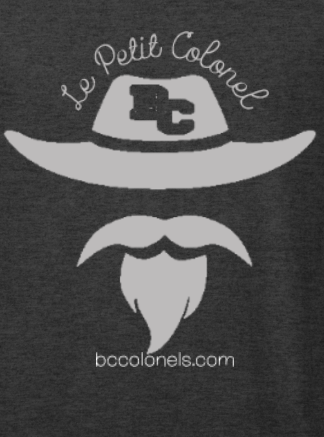The Dark Origin Behind Disney’s Classic Films
With the conversation of today’s media being either too soft or too inappropriate, one should evaluate the origins behind some of the largest media company’s projects.
February 24, 2023
The Disney company is vast and powerful. With countless films, television shows, and other pieces of media in circulation around the world, Disney has captured the hearts of generations. Theme parks sit all over the globe for fans to step into the magic they grew up with. What many don’t know is the inspiration for the films we and our families fell in love with. The sick truth is that nearly all of the classic Disney films we know and love were inspired by grim, sometimes violent stories long before Walt Disney stepped into Hollywood.
“Snow white and the seven dwarfs” was released in 1937. It was the first of many Disney princess films, starting the trope on a good note seeing how successful the film was. The film details a young girl who lives with her jealous stepmother who orders her henchman to kill the princess. Unable to face killing Snow White, he lets her free to live in the forest with the seven dwarfs. When the evil queen learns that snow white is still alive, she disguises herself as an old hag to trick Snow into eating a poisoned apple. When Snow is thought to be dead, she lies motionless in the forest to be mourned by her dwarf friends, until a prince discovers and kisses her, bringing her back to life. The sweet story ends happily while the original has a painful difference. The original was written by the Brothers Grimm in 1812 and shares all the similarities to the Disney film except for the fact that when Snow is poisoned, the prince does not kiss her, bringing her back to life. Instead, while carrying her casket away, he drops Snow White, dislodging the apple from her throat and waking her up. They then arrange a large wedding for every royal person in the land. The evil queen even attends. when she arrives, she is forced to wear a pair of red hot, metal shoes. She must dance in these shoes until she drops dead. This served as her punishment for attempting to kill Snow White.
Pocahontas has had its fair share of backless in recent years due to its extreme inaccuracies in the true story of the real native American girl. It was one of the most controversial Disney Princess films. In the film, Pocahontas is the daughter of a powerful Native chief who wants her to marry a warrior from their tribe. She instead falls for a British captain, and her father disapproves. Conflict increases when the captain’s fellow Englishmen attempt to rob the native tribe. The real Pocahontas was the daughter of a Powhatan chief. She was born around 1595, her birth name being Matoaka. Pocahontas came to her as a nickname meaning spoiled child. When the English clashed with her tribe, a captain was captured by the Powhatan tribe. Ten-year-old Matoaka threw herself in front of the captain to prevent him from being executed. There was no romance between the two. Later, she met a man named John Rolfe, a tobacco planter. To secure her safety, she married him and was renamed Rebecca. This was the first recorded marriage between a European man and a Native American woman. After two years, Rolfe brought Matoaka to England, showing her as a symbol of goodwill between the English and Native Americans. While returning to the Americas, Matoaka fell ill on board her ship and died soon after at the age of twenty-one. Much suspicion surrounding the cause of death has been passed around but nothing has been confirmed.
The 2010 film, Tangled told the story of a young princess named Rapunzel who possessed magical healing powers. Stolen from her crib by a reclusive old woman, she is taken to a remote tower where her magical hair grows unfathomably long. As she grows up, she becomes more and more curious as to what sits beyond her tower window. She longs to see the source of a beautiful group of floating lights on her eighteenth birthday. She teams up with a local thief who helps her discover the truth of what the lights mean. She falls in love with the thief and is reunited with her parents. The original story does not follow the same wholesome series of events. The fairytale begins with a poor couple who live next to a witch. The pregnant woman asks her husband to steal a plant from the witch’s garden because she wants nothing more than to enjoy it while she waits for her child to arrive. When the husband is caught, he begs the witch for his life. The witch lets him go on the condition that he hands over their child the moment it is born. He does just this. The witch hides the child away and raises her as her own. Rapunzel grows up to have long golden hair and at the age of twelve, she is locked away in a tower to prevent her from leaving. One day, a prince approaches the tower where they meet and fall in love. The two plan to marry when the witch cuts Rapunzel’s hair and sends her into the woods to fend for herself. The witch then uses the cut hair to trick the prince into climbing up into the tower where the witch tells the prince Rapunzel is gone. The prince attempts to end his own life by jumping out of the tower, and landing on a bed of thorns. These thorns blind him, leaving him to wonder aimlessly for the rest of his life in search of his true love. One day, he hears his love singing in the woods and the two are reunited. His sight is miraculously repaired and the witch is trapped in the tower to die.
The 1940 film Pinocchio tells the story of a man named Geppetto who makes a wooden puppet named Pinocchio. One night, Pinocchio is brought to life by a fairy. As Pinocchio is walking to school, he is persuaded to join a traveling circus troupe. When he tries to return to his father, he is imprisoned by the owner of the circus. When the same fairy frees him, he begins lying about what he has been up to. This causes his nose to grow. Pinocchio and his conscience, Jiminy Cricket return home to see that Geppetto has gone to sea in search of him. Pinocchio finds that Geppetto has been swallowed by a whale. In an attempt to set his father free, Pinocchio drowns. Because of his bravery and selflessness, Pinocchio is revived by the fairy who allows him to live a real life as a human boy. The original story, written by Carlo Collodi tells a much darker tale. The story describes Pinocchio as a wildly disobedient child who ridicules his creator/ father, Geppetto. In this story, Jiminy Cricket is not a wholesome conscience for the boy but another one of Pinocchio’s victims. When the cricket tries to reprimand Pinocchio for treating his father poorly, the puppet brutally kills Jiminy by bashing his head in with a hammer. The book follows Pinocchio being repeatedly attacked, robbed and nearly having his legs burned off, intending to set an example for poorly behaved children. Carlo never wanted the story to have a happy ending, resulting in the story concluding with Pinocchio hanging himself. Publishers were horrified by this conclusion so Carlo was forced to introduce a magical blue-haired character who brings him back to life. This is the character that would be made into the fairy from the Disney film. While the original teaches a lesson of good behavior and obedience to children, the route which Carlo Collodi took was not child friendly.
For a brand that claims to be purely wholesome and family-friendly, Disney has a rich history of hiding the dark truth behind its stories. This could be because the lessons taught by these fairy tales are valuable and must be passed down. However, many could say that Disney has just been recycling stories for corporate gain. Whatever the truth is behind Disney’s intentions, it’s interesting to view classic childhood films that shield a sinister and twisted origin.


